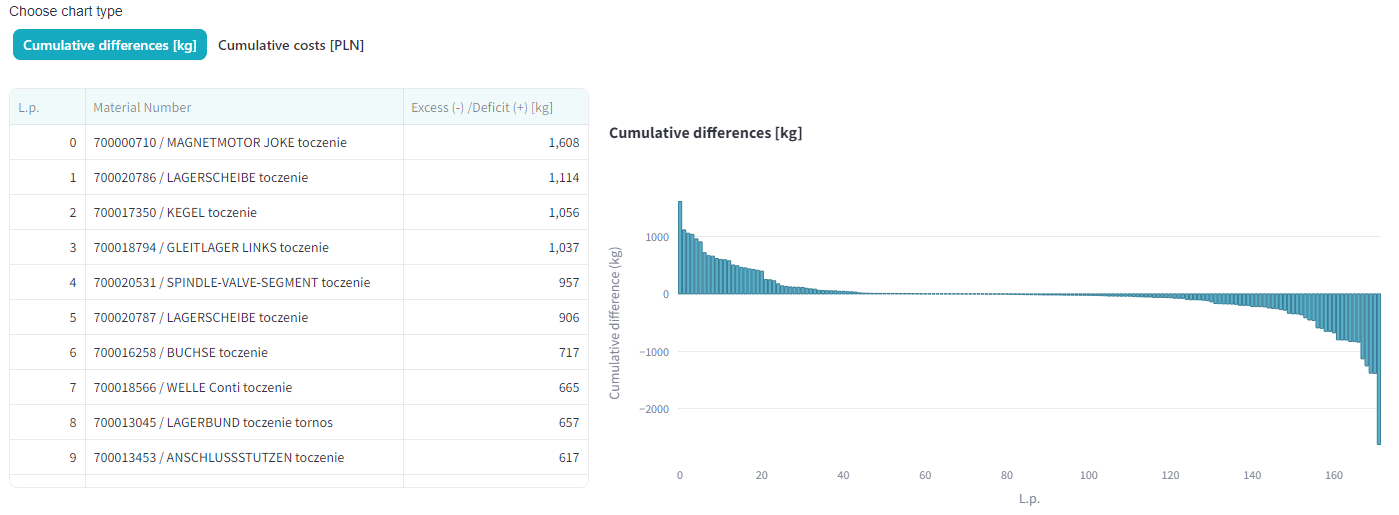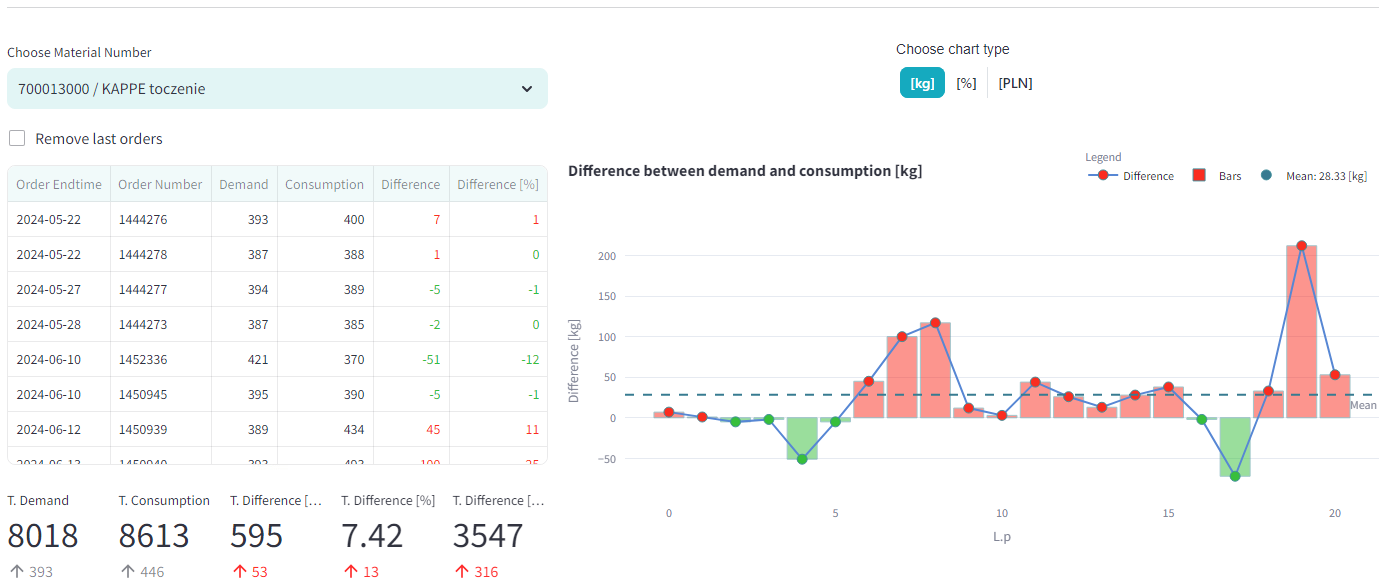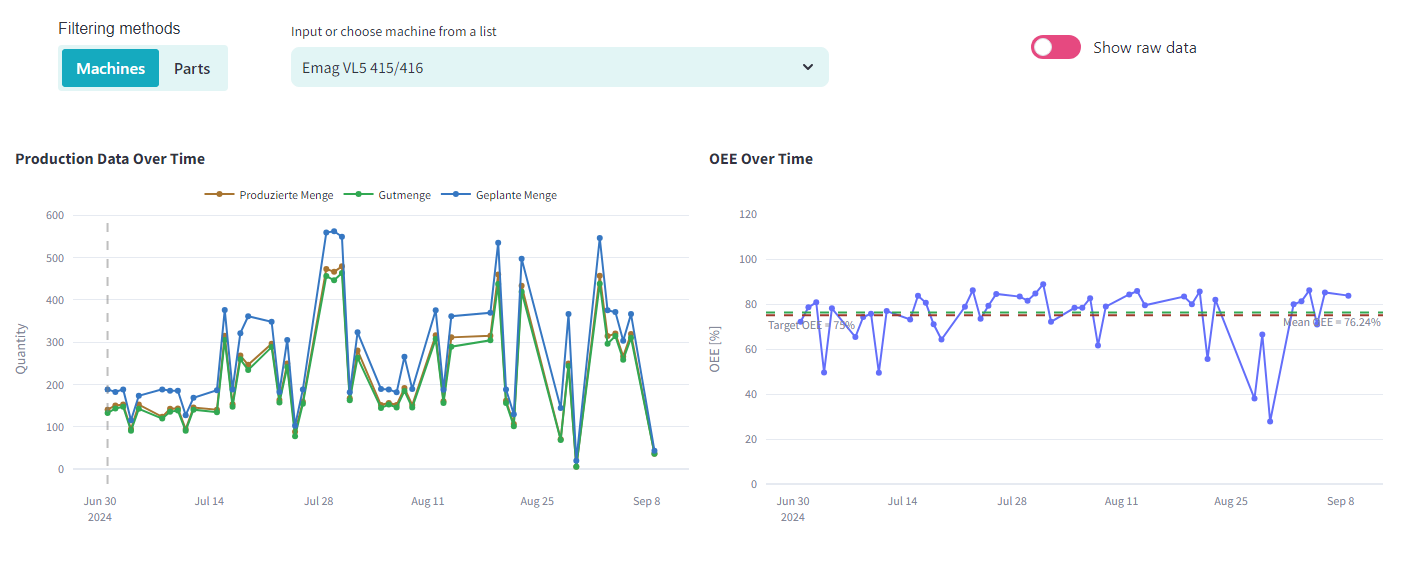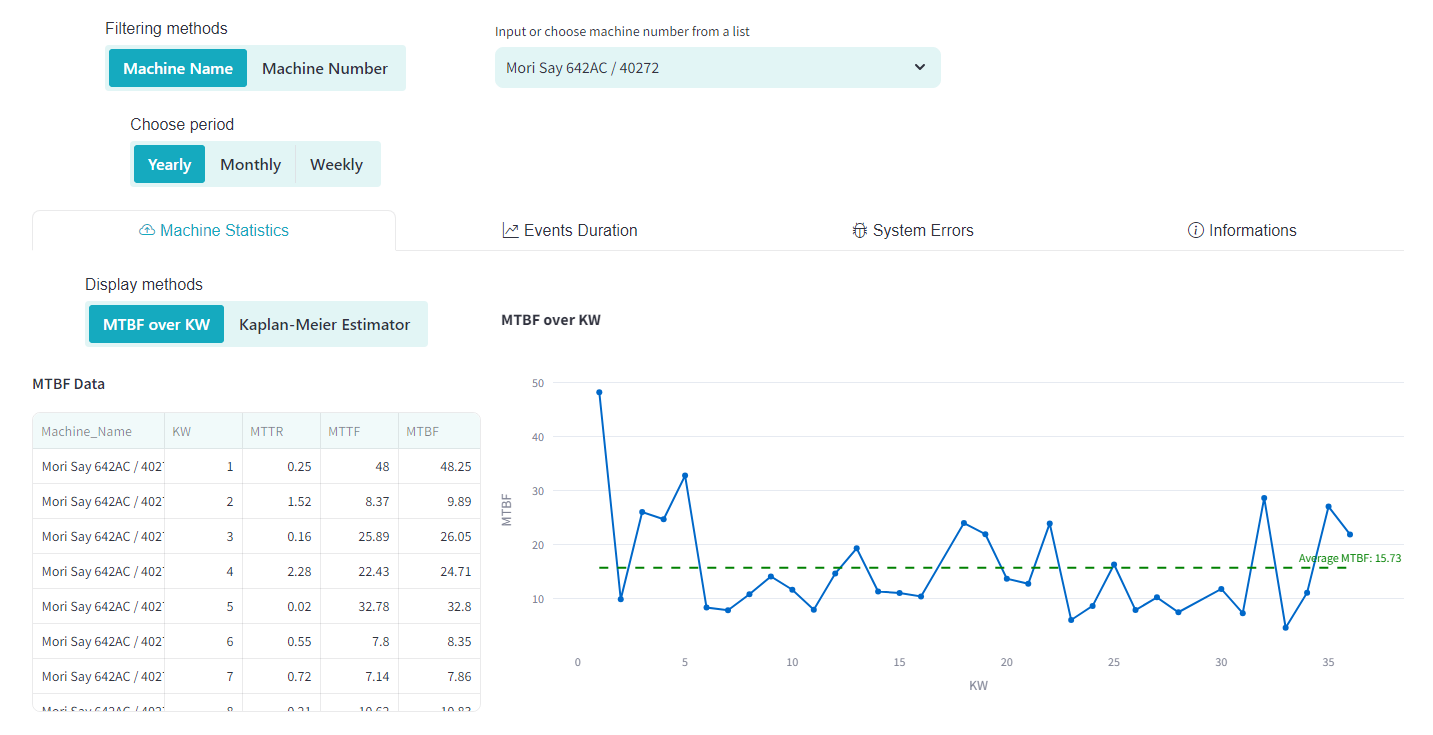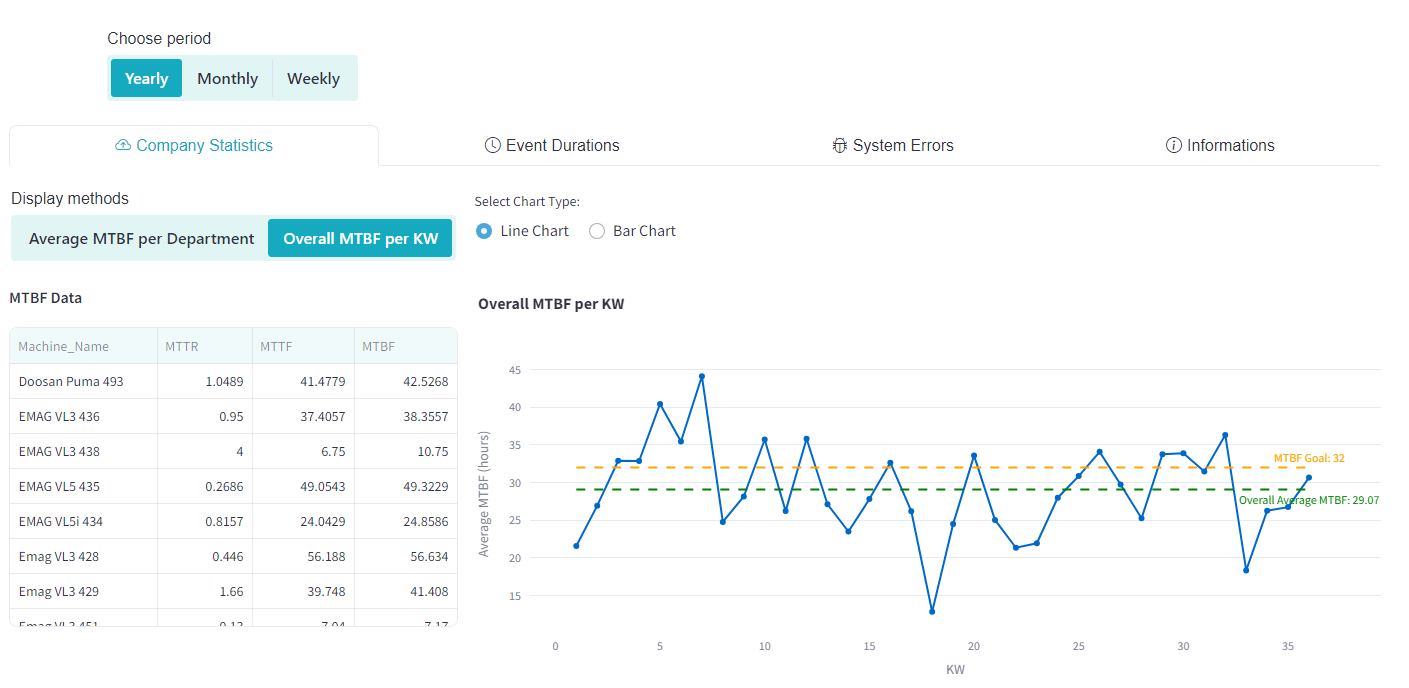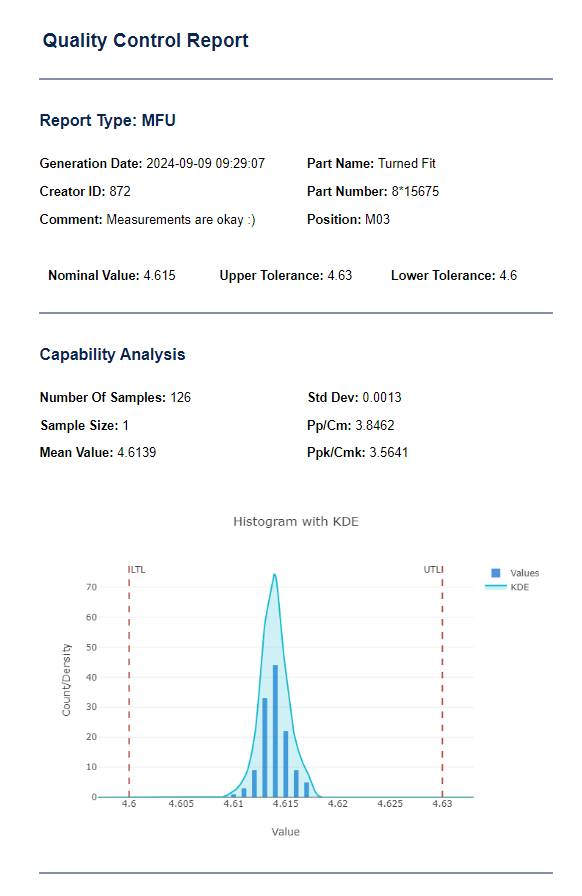Company Toolkit
Set of tools for automotive company
Project Overview
- Project Name : Company Toolkit
- Version : v0.5
- Last Modified : 11.09.2024
Thank you for taking the time to visit the Company Toolkit project! The Company Toolkit is an application developed for Company, designed to provide a comprehensive set of tools aimed at enhancing operational capabilities and improving decision-making efficiency across various areas of the company.
Currently, the toolkit includes functionalities tailored to the following areas:
- Production: Tools for tracking OEE (Overall Equipment Effectiveness), MTBF (Mean Time Between Failures), and material consumption analysis.
- Quality Control: Tools for determining process capability, PDF parsers, and reporting functionalities.
- Finance: Automation tools for finance-related tasks, streamlining daily operations.
If you're interested, more information can be found below or in the sidebar.
Technology Stack
The Company Toolkit application is developed using the Streamlit framework. It is deployed on a virtual machine and made accessible through the company's intranet, ensuring that all employees across the entire Company Group, not just those in the Polish branch, can easily access and use the application.
Application Functionalities
Materials Module
This module enables the analysis of material balance data for the production of parts on CNC machines. Users can either import data from the SAP system or select existing data already available in the application. The module then presents this data in an accessible format, allowing users to analyze all production orders efficiently.
The module calculates material balances, which represent the differences in kilograms, percentages, and PLN between the predicted demand and the actual consumption for each order and each manufactured part. These data are presented both in a tabular format and as visualizations, such as charts, to provide a clearer overview of the results.
Additionally, the module provides a summary of the data for each produced element, calculating cumulative differences and costs. This enables real-time analysis of machines where significant material overuse occurs, allowing for effective identification of areas that require optimization measures.
OEE Indicators
This module is designed to calculate and analyze OEE (Overall Equipment Effectiveness) indicators. Users can either import new data from the Syncos system or load existing data from within the application. Once the data is loaded, the user can select any machine or part name and review production data over time, along with the average OEE values.
The data is presented in the form of time-based charts, allowing for comprehensive analysis of each produced element within the company.
The application also provides insight into daily data on planned and unplanned downtimes, as well as production times for each part and each machine. This detailed breakdown allows users to identify inefficiencies, monitor equipment performance, and implement targeted improvements. Such a solution enables more effective production planning, better utilization of resources, and ultimately helps in reducing operational costs by minimizing unnecessary downtimes.
MTBF Indicators Module
This module allows for the display of production data and the automatic calculation of MTBF (Mean Time Between Failures) indicators. It provides weekly, monthly, and annual MTBF metrics for selected machines, departments, and the entire company.
Thanks to this, the maintenance team can monitor MTBF at multiple levels—from individual machines on a weekly, monthly, and annual basis, to entire departments and the company as a whole.
The automation of this process significantly improves efficiency, as MTBF calculations and updates now happen without manual intervention. This allows for quicker responses to equipment failures, better planning for preventive maintenance, and overall improvement in equipment reliability. Automating these tasks reduces time spent on manual calculations, allowing the maintenance team to focus on optimizing processes and reducing downtime.
Measurements module
This module allows users to import previously collected measurement data for parts and prepares it for further analysis. Users can either select data from the uploaded file or manually input necessary values such as tolerances and nominal values.
After the data is prepared, the module automatically generates an individual value chart, calculates a moving average, and performs a capability analysis. Key quality indicators such as Cp, Cpk, Pp, Ppk, Cm, and Cmk are calculated and presented in a histogram format. The module performs similar calculations and visualizations to those available in software like Minitab.
Additionally, the module enables the generation of customizable reports. Users can choose to include all charts and data, or select specific charts and values to be featured in the report. This customization allows for tailored reports that can be generated for clients or internal company purposes based on the loaded data and analysis.
By automating quality control processes, the module significantly reduces the time spent manually entering values into the system, ensuring faster and more accurate reporting. This leads to more efficient decision-making and better resource allocation within the company.
PDF Parser Module
This module allows users to select a folder containing PDF files generated by measurement devices, such as 3D coordinate measuring machines or optical devices, and parse these PDFs to extract relevant data and dimensions for further analysis. The extracted data can then be saved in either CSV or Excel format for ease of use. The module includes parsers for various measurement devices available within the company.
This solution allows for the rapid extraction of essential data from PDF files, unlocking new methods of quality analysis within the company. Previously, measurement files in PDF format were stored on company drives, and for deeper process and quality analysis, results had to be manually entered. Now, the quality control team can extract vast amounts of data in minutes, which can then be analyzed in the Measurements Module.
This solution dramatically reduces the time required to obtain data from PDFs and automates the entire process, significantly increasing efficiency in quality control operations.Intrastat Module
The Intrastat module allows users to import relevant data from the SAP system, specifically related to the sales and purchases of various elements during a given month. Once the data is imported, an interactive table is provided, allowing users to edit the data, for example, to fill in missing information. This module was designed primarily to automate the tedious monthly calculations performed by the finance department.
After all the necessary data is entered, the module automatically performs all calculations and generates a file that can be submitted directly to Intrastat.
This solution has automated a process that used to take approximately 3 days of manual work—collecting, verifying, and entering data—and reduced it to just 1 hour (depending on the amount of missing data that needs to be filled in), significantly streamlining the process.
The benefits of this solution include a substantial reduction in time spent on manual tasks, leading to increased efficiency and lower labor costs. By automating this process, the finance department can now allocate time and resources to more strategic tasks, improving overall productivity and reducing the risk of human error in reporting.
Summary
The Company Toolkit has proven to be an essential tool for enhancing operational efficiency across multiple areas of the company, including production, quality control, and finance. By automating complex processes, reducing manual work, and enabling data analysis, the toolkit has significantly streamlined workflows and enhanced decision-making capabilities within the organization.
This project continues to evolve and expand based on the ongoing needs of the company, ensuring that the toolkit remains an integral part of optimizing business operations and supporting the growth of Company.
